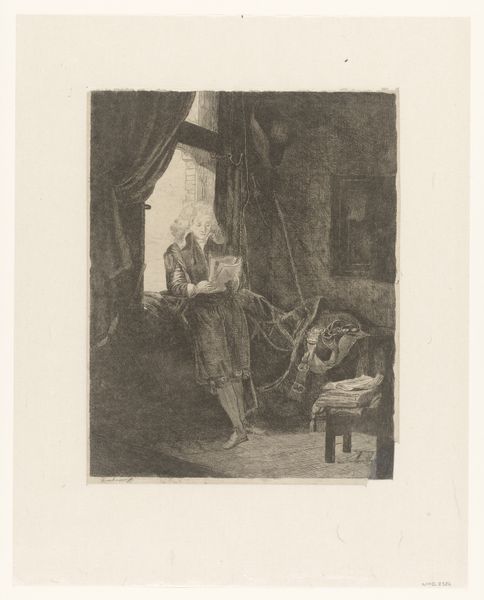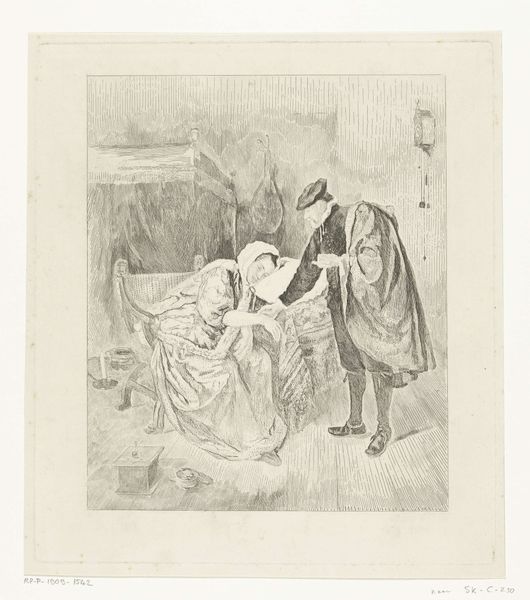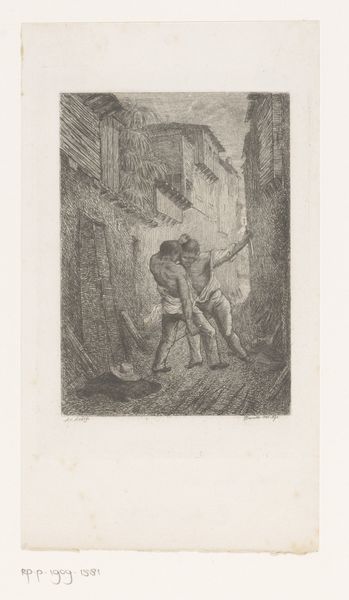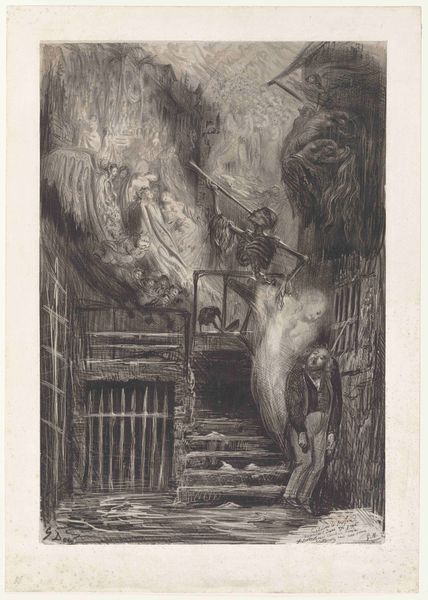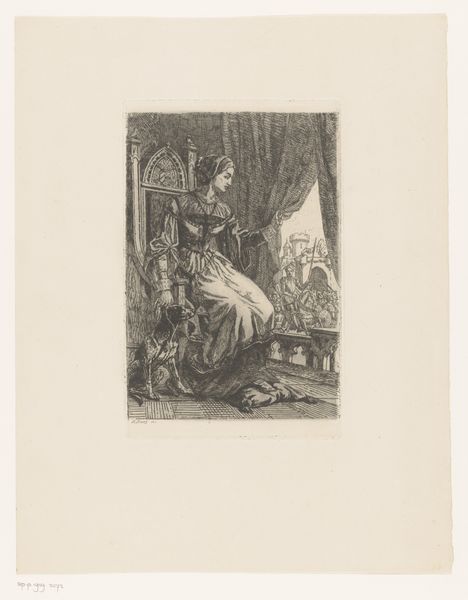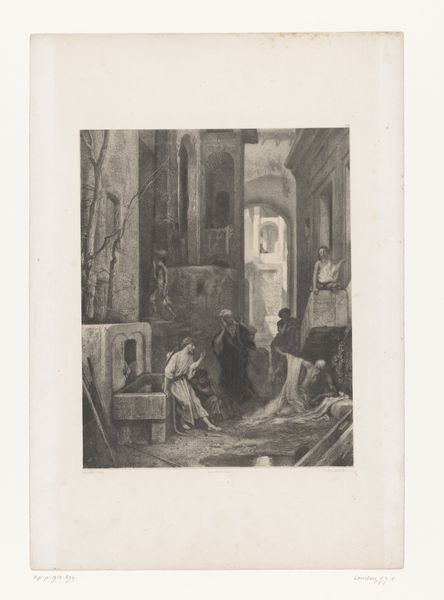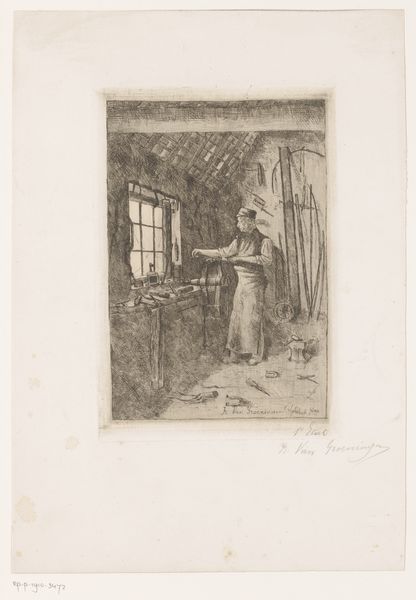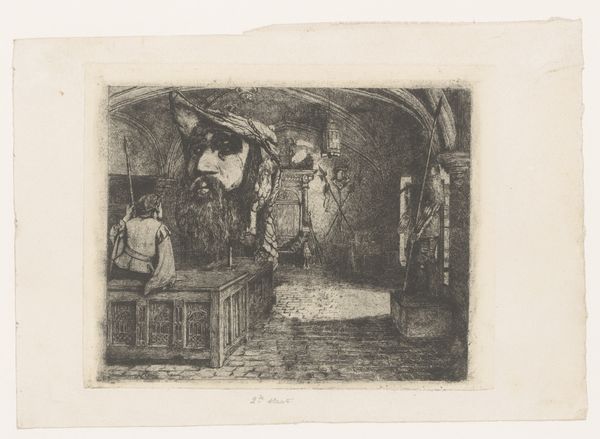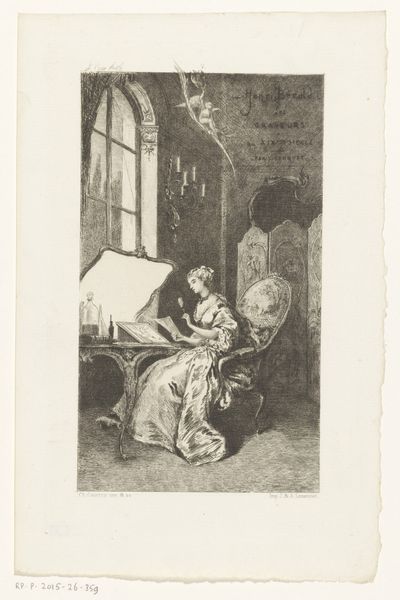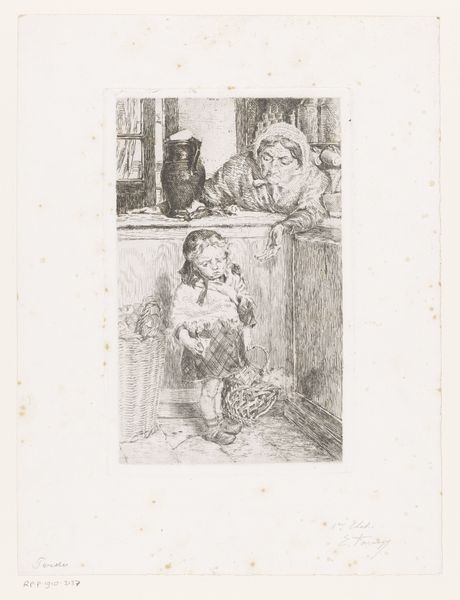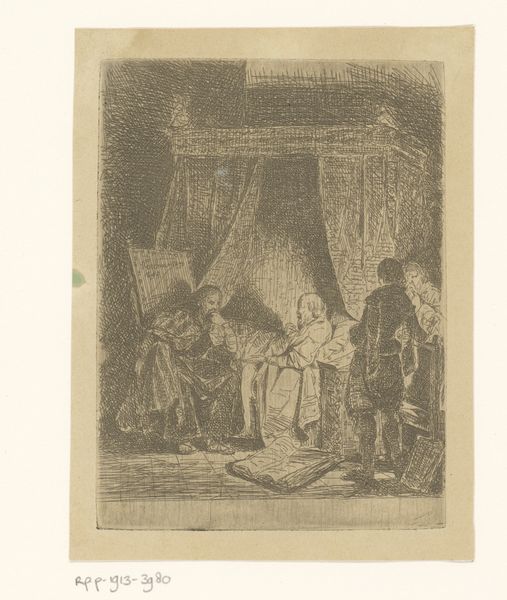
Erasmus bovenaan een trap met onderaan een gevallen man 1841
0:00
0:00
guillaumejosephvertommen
Rijksmuseum
print, etching, engraving
#
narrative-art
# print
#
etching
#
old engraving style
#
figuration
#
romanticism
#
genre-painting
#
history-painting
#
academic-art
#
engraving
Dimensions: height 185 mm, width 121 mm
Copyright: Rijks Museum: Open Domain
Curator: This is Guillaume Joseph Vertommen's 1841 etching and engraving, "Erasmus bovenaan een trap met onderaan een gevallen man," housed here at the Rijksmuseum. Editor: It’s striking how stark the composition is; the figure at the top is almost glowing while the fallen man seems swallowed by shadows. What is the context? Curator: Well, as an etching and engraving, its production inherently involves a layering of labor and technique. The very act of incising lines into a metal plate, applying ink, and then pressing it onto paper transforms the image into a commodity. The matrix bears its history, its making right on its surface. Editor: Precisely. Consider who gets to be represented as triumphant versus who is relegated to the base of the staircase. The dynamic is a very clear visual metaphor for hierarchies within a social structure. The darkness literally obscures the man at the bottom. What does it tell us about access and power in 19th century Netherlands? Curator: We can interpret that further when we acknowledge Vertommen was very involved with Romanticism at the Academy in Antwerp. Consider also the labor expended to print and disseminate the piece and its themes. Editor: True, the etching's success relied on the manual skills involved. That also suggests it could have been relatively reproduced and disseminated within certain societal boundaries. Where did these prints circulate? Were they accessible to working-class audiences? Did it reinforce already-held convictions? The symbolism, like the stark light and dark contrast, are not exactly subtle. Curator: What interests me, particularly as a materialist, is the availability of Vertommen's labor, skill, and materials, versus the other options for engravers working contemporaneously. This wasn't created in a vacuum, it reflects market concerns for its form. Editor: Right, thinking about it, we could extend our analysis, asking who had their image recorded? Where in social and political networks were such works circulated, and what effect did it have? Thanks to its materials and distribution the image likely further calcified power structures in the area. Curator: Absolutely. It encourages us to contemplate art making as intrinsically linked to broader socioeconomic systems. Editor: Agreed. Let’s carry this thread forward in the next room.
Comments
No comments
Be the first to comment and join the conversation on the ultimate creative platform.

